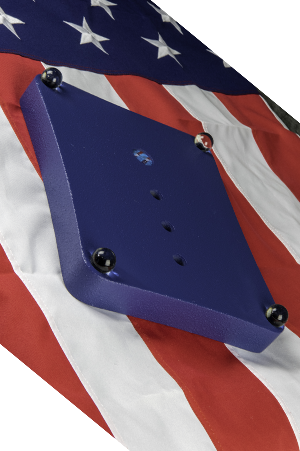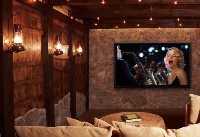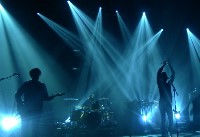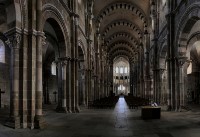HOME TOWN AV SYSTEM
 About 70 years ago, colored television took the place of the old black-and white screens. Today, HD and 4K technology offer viewers amazing visual satisfaction. However, where 70 years has revolutionized what we see on the screen, our sound systems still leave much to be learned and improved.
About 70 years ago, colored television took the place of the old black-and white screens. Today, HD and 4K technology offer viewers amazing visual satisfaction. However, where 70 years has revolutionized what we see on the screen, our sound systems still leave much to be learned and improved.
The modern sound system has made considerable progress- going from single track and stereophonic sound from 5.1 and 7.1 surround sound. Just as the television set went to 3D viewing, sound systems going from one track to two-track is a big deal. However, I believe the 5.1 and 7.1 sound systems are nothing more than a merchant’s trick to get a consumer to commit to buying an inferior product. A compromising effect.
Sony has engineered 4K technology to a degree that is hardly imaginable. In the field of audio technology, sound experts in the US and Europe quarrel over who holds the true name in professional stereo systems so much that they have steered in the wrong direction completely. Meanwhile, Chinese experts are stuck in a KTV room not willing to leave. Where are the experts looking to make a product with stereo quality that matches up with 4K technology?
With 4K giving the viewer a stronger sense of reality through the picture quality on the screen; the question arises: where is the realistic sound to go with it? If we continue to use systems such as the 5.1 and 7.1 that go on the assumption that data processing sound using DSP is the way to go, then this realistic sound is not likely to happen!
 We have gathered a group of enthusiastic HiFi fans, who are discerning fans who truly value their listening experience when it comes to sound quality. When the center-channel speaker came out, fans bought into the idea- hook, line, and sinker. What no one in this group asked was this simple question: why do we need a central-channel speaker? Why must we lift an extra piece of clunky and unreliable equipment when the two-track stereo system could already provide great balance and specs. Why isn’t the next step to throw out that center-channel speaker from our living room?
We have gathered a group of enthusiastic HiFi fans, who are discerning fans who truly value their listening experience when it comes to sound quality. When the center-channel speaker came out, fans bought into the idea- hook, line, and sinker. What no one in this group asked was this simple question: why do we need a central-channel speaker? Why must we lift an extra piece of clunky and unreliable equipment when the two-track stereo system could already provide great balance and specs. Why isn’t the next step to throw out that center-channel speaker from our living room?
When a movie director zooms his camera in and concentrates on a specific image, why must we also amplify the sound? If the sound system produces a conversation going on behind us, should we look back to see who is talking? Is stereophonics for seeing or hearing? Why don’t we install a 360-degree screen to go with the surround sound system? After all, how hard was it to take our eyes off a scene that was constrained to 100 inches?
What we need in our sound is to bring us to a sense of audio reality: true and natural sound.
Picture a countryside: when you look around, you see a water buffalo gulping down water. A nearby magpie flies over to a tree branch chirping for a moment then it flies away. Then a farmer whistles while motioning to the water buffalo that it is time to get to work.
In this ordinary everyday video of a farm scene, the subtle sounds of a buffalo drinking, magpie tweeting, and a farmer whistling all exceed 60 dB (decibels)! While a magpie floating onto the scene breaks the silence, how can we clearly hear the water buffalo drinking at 40 dB of sound pressure? Does the system have a high enough resolution to reproduce the 90dB sound of the magpie chirping or even the 100 dB sound of the farmer’s whistle? While we’ve been striving to coordinate these responses and simple sound effects over the last 40 years, we’ve failed to solve this problem in a satisfying manner. The sounds we hear are different from what we are hearing in our living room. We can hear the sounds, but they often lack a certain authenticity or sense of space. These systems also lack large dynamics and explosive forces.
Do we have a desire to go to a live concert? Sure, fans are eager to see their favorite band play a fantastic show, but they are even more eager to experience a legendary and melodic symphony of the music. While a concert might leave the fans disappointed in the sound quality and production, often they can’t wait until the next concert. Why do we watch movies at the cinema? Sure there are memories from seeing a film or to maybe even kiss your first love, but most people are there for the hair-raising shock and emotional experience that even a halfway decent movie can provide when it’s accompanied with amazing sound effects.
Behind the scenes, concerts from start to finish are often chaotic and the desire to experience pure sound often ends in disappointment if a minor thing goes wrong. Sitting in the cinema, while waiting for that anticipated shock from sound, we can sometimes experience disappointment when we put unrealistic expectations on a sound system that suffers from unevenness or one that cannot make up for a bad seating location.
Because of that, Q series Home Town AV System wants to turn the living room into a real “entertainment” center!
The Q series has an original concept design for the linear array system. Only with a system like this can you hear the smooth sounds you expect from a music concert. And while making it to every concert would be impossible, with American DjAV, thousands of households can have a lively experience that’s conveniently located right in the comfort of their own living room, allowing them to jam out or be soothed by the melodies that they can’t wait to hear.
And while making it to every concert would be impossible, with American DjAV, thousands of households can have a lively experience that’s conveniently located right in the comfort of their own living room, allowing them to jam out or be soothed by the melodies that they can’t wait to hear.
The name “Hollywood” conjures up a certain vision and passion. The founder of DjAV grew up and was inspired by this vision and passion. He believed that experiencing true and natural sound should be a reality rather than fantasy. He has made a system which surpasses cinematic sound effects and captures true consciousness, and it’s with his and his team’s consciousness of the inevitability of true sound that he’s enhanced the living room’s status with amazing and dynamic sound effects. While the cinema could never provide a dynamic shock over 60 dB, inside the living room you can have the “best seat in the house”!
With two small speakers, and a central panel—these three pieces of simple equipment- the Q Home Town AV System creates a new world making the living room truly an “entertainment” center!
Download movie test music(52.9MB)
With the innovation of surround sound speakers in the mid 1900’s, we present to you DjAV Speakers of 2020. Whether for slow tempo, progressive, or jazz music, our new sound system entices your sensations of music to a whole new level without the implementation of a separate subwoofer.
Despite the visual lack of a subwoofer on the ground, the depth of sound of these speakers never fail to surprise the user. The uses of these DjAV Speakers are endless due to the versatility in their dynamics! Not only are they excellent for theater or home speakers, but they also have the power to win against other studio speakers. With just two of these DjAV speakers your home will soon feel like a new and improved home theater. It is literally Earth shaking!
Cathy G.








